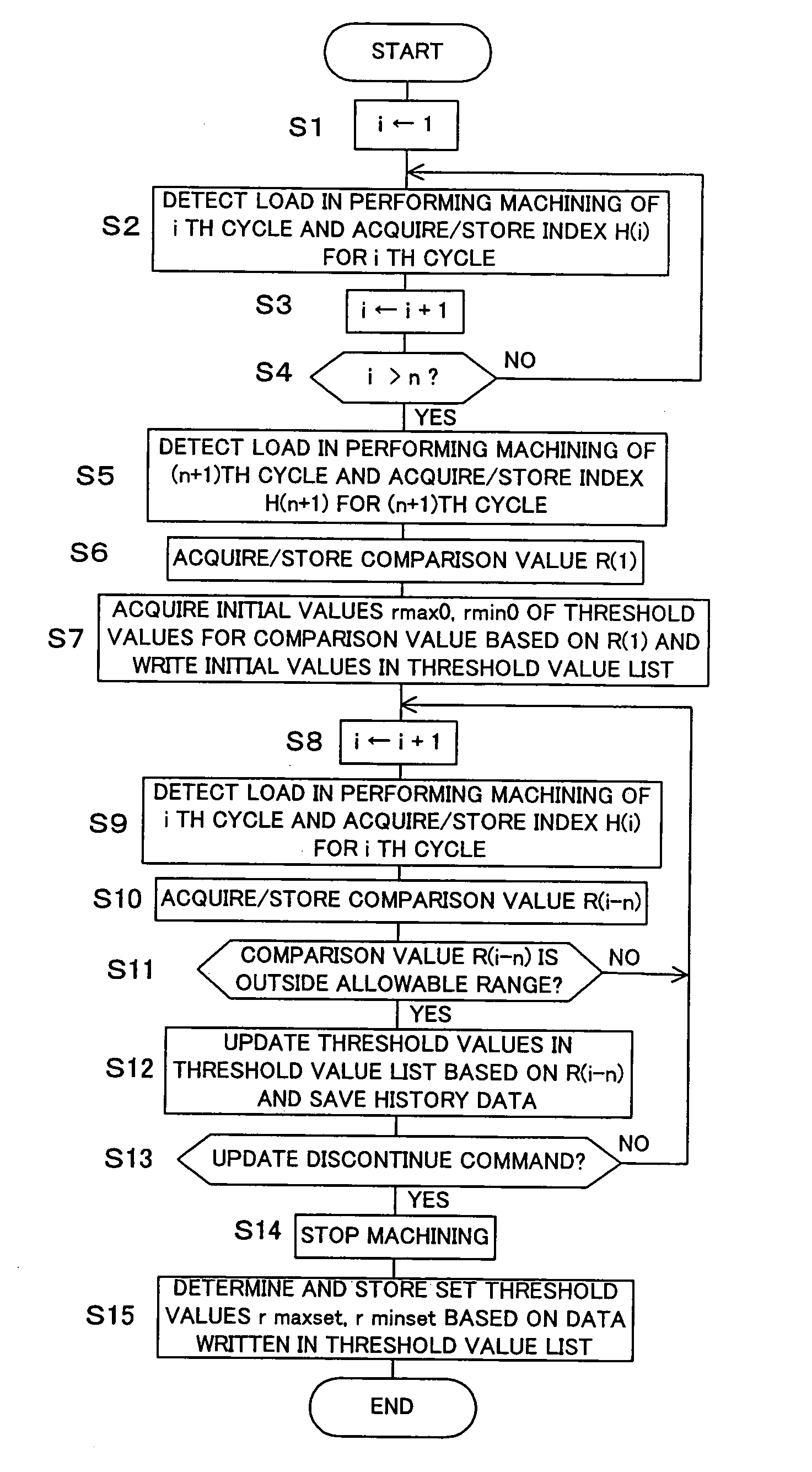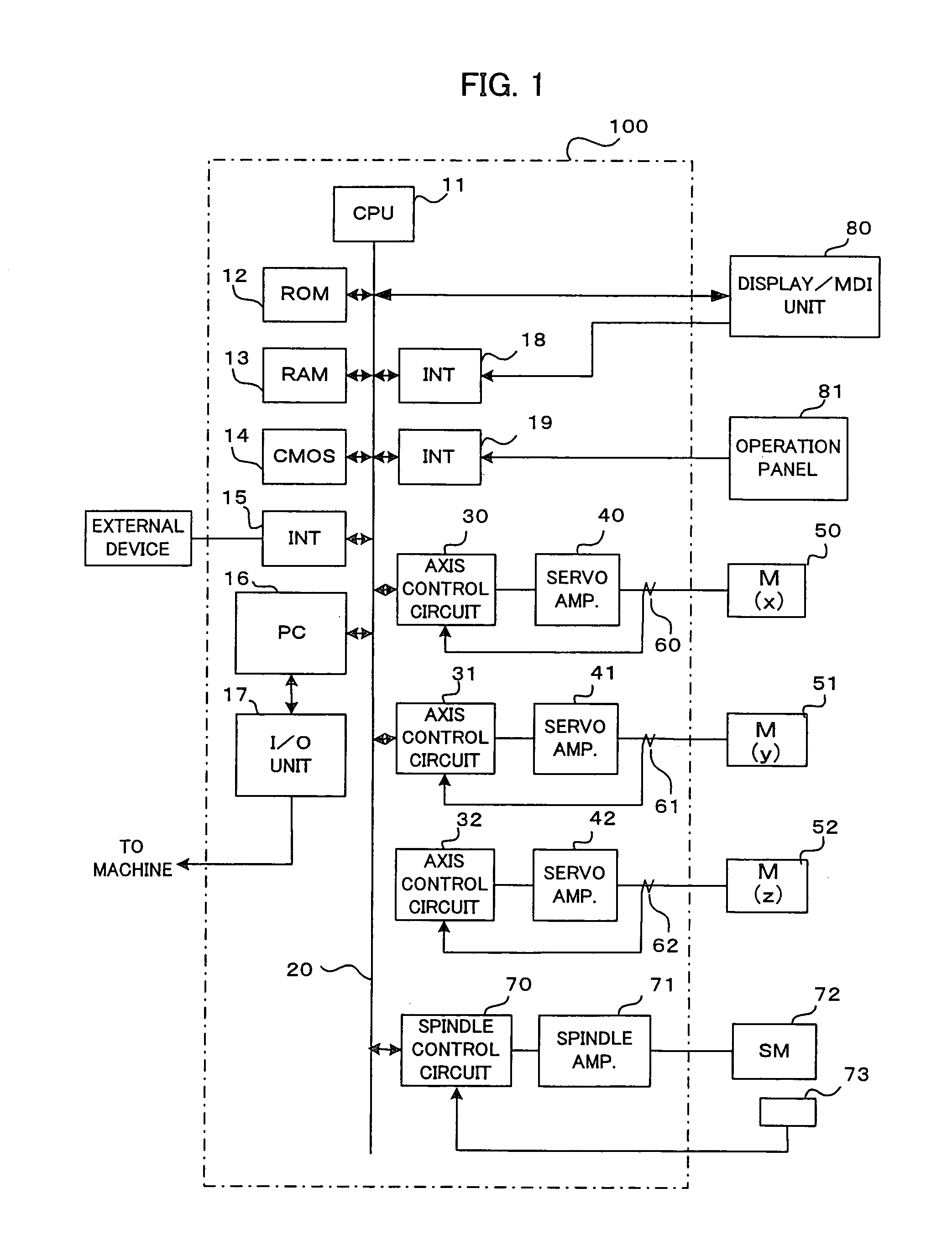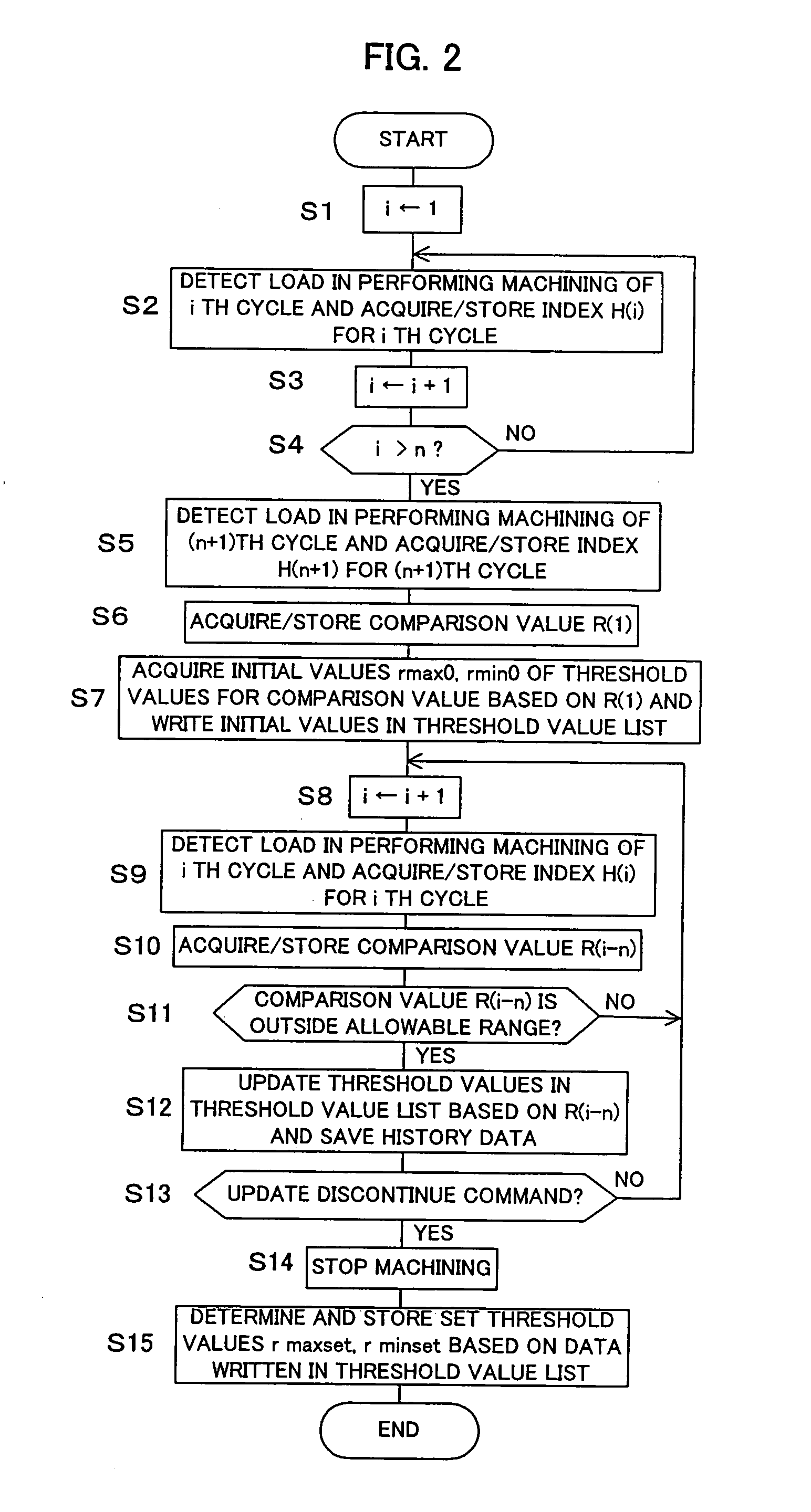Tool damage/abnormality detecting device
a detection device and tool technology, applied in the direction of instruments, program control, nuclear elements, etc., can solve the problems of inability to maintain the necessary machining accuracy of workpieces, continue the same machining, and the tool is subject to damage/abnormality, etc., to achieve the effect of easy and appropriate adjustment of the allowable range of the indexes and easy adjustmen
- Summary
- Abstract
- Description
- Claims
- Application Information
AI Technical Summary
Benefits of technology
Problems solved by technology
Method used
Image
Examples
Embodiment Construction
[0024]FIG. 1 is a block diagram of a control device (numerical control device) 100 for machine tool control, which doubles as a tool damage / abnormality detecting device according to the present invention. In FIG. 1, a CPU 11 is a processor for generally controlling the control device 100. The CPU 11 reads a system program from a ROM 12 through a bus 20 and controls the entire control device 100 in accordance with the system program. A RAM 13 is stored with temporary calculation data, display data, and various data that are inputted by an operator through a display / MDI unit 80. A CMOS memory 14 is formed as a nonvolatile memory that is backed up by a battery (not shown) so that it can maintain a storage state even after the control device 100 is switched off.
[0025] The CMOS memory 14 is stored with a machining program read through an interface 15, a machining program inputted through the display / MDI unit 80, etc.
[0026] Further, the ROM 12 is preloaded with various system programs f...
PUM
 Login to View More
Login to View More Abstract
Description
Claims
Application Information
 Login to View More
Login to View More - R&D
- Intellectual Property
- Life Sciences
- Materials
- Tech Scout
- Unparalleled Data Quality
- Higher Quality Content
- 60% Fewer Hallucinations
Browse by: Latest US Patents, China's latest patents, Technical Efficacy Thesaurus, Application Domain, Technology Topic, Popular Technical Reports.
© 2025 PatSnap. All rights reserved.Legal|Privacy policy|Modern Slavery Act Transparency Statement|Sitemap|About US| Contact US: help@patsnap.com



